May 28, 2021 | dollar, nclt, news, US Mint
The U.S. Mint posted the following on its Facebook page at 11:30 PM on Thursday, May 27, 2021:
For those who do not access Facebook, the following is the complete text of the announcement:
The United States Mint is committed to providing the best possible online experience to its customers. The global silver shortage has driven demand for many of our bullion and numismatic products to record heights. This level of demand is felt most acutely by the Mint during the initial product release of numismatic items. Most recently in the pre-order window for 2021 Morgan Dollar with Carson City privy mark (21XC) and New Orleans privy mark (21XD), the extraordinary volume of web traffic caused significant numbers of Mint customers to experience website anomalies that resulted in their inability to complete transactions.
In the interest of properly rectifying the situation, the Mint is postponing the pre-order windows for the remaining 2021 Morgan and Peace silver dollars that were originally scheduled for June 1 (Morgan Dollars struck at Denver (21XG) and San Francisco (21XF)) and June 7 (Morgan Dollar struck at Philadelphia (21XE) and the Peace Dollar (21XH)). While inconvenient to many, this deliberate delay will give the Mint the time necessary to obtain web traffic management tools to enhance the user experience. As the demand for silver remains greater than the supply, the reality is such that not everyone will be able to purchase a coin. However, we are confident that during the postponement, we will be able to greatly improve on our ability to deliver the utmost positive U.S. Mint experience that our customers deserve. We will announce revised pre-order launch dates as soon as possible.
Sources reported that unhappy collectors “besieged” the U.S. Mint with email and telephone calls following their latest ordering fiasco. The sources also said that the offices of several members of congress contacted the U.S. Mint after hearing from their constituents.
One source said that collectors contacted the Treasury Office of Inspector General (OIG) and prompted them to question U.S. Mint management on the problems. I have not been able to confirm this story.
In short, it was the action by angry collectors that made the U.S. Mint stop and rethink its sales policies. It was you, the collector, who called Congress, made waves, and forced the U.S. Mint to listen.
Too bad ANA leadership did not take a leadership role on behalf of the hobby.
If you like what you read, share, and show your support 
May 18, 2021 | coins, commentary, nclt
 The evolution of coin collecting is here. It is all around you, and if you are collecting using blue and brown folders or plastic holders, you are not part of the evolution or at the periphery of the evolution.
The evolution of coin collecting is here. It is all around you, and if you are collecting using blue and brown folders or plastic holders, you are not part of the evolution or at the periphery of the evolution.
New collectors are collecting based on a coin’s theme. They are not interested in date or mintmark series of coins but want a connection to their collectible. The coins must have a meaning.
A midwest club of sports collectors invited me to speak about coins with sports themes. They had heard of the Basketball Hall of Fame coin but wanted to know more. I gathered my information and joined them via Zoom.
For this talk, I made a list of commemorative coins celebrating sports. This list includes the Baseball Hall of Fame coins, the many Olympic commemorative coins, and the Jackie Robinson commemorative coins.
As part of the discussion, they asked why collectors did not like the colorized Basketball Hall of Fame coins. One club member tried to buy the colorized clad proof from a local coin shop and was shamed by the shop’s owner for wanting this coin. The shop owner said that it was a damaged coin and that it will not be worth much in the future. Rather than selling the collector the colorized coin, he tried to sell a regular proof.
Unfortunately, the “traditional” numismatic feeling is that a coin is a legal tender flat metal disc with a denomination with a date, and some have mintmarks. Within the collection of the flat discs, there may be variation in how the coin was struck, changes in dies, and other unintended alterations the hobby calls errors. But that is not what interests today’s collectors.
One of the club members has been collecting the Super Bowl coins from the Highland Mint. He loves football, and the Highland Mint produces the coins for the Super Bowl coin toss. They sell replicas to collectors. The Highland Mint also sells commemorative replica sets for all of the Super Bowls’ coins. For the years before the Highland Mint’s involvement, they created a coin that may have been appropriate for the game.
After listening to the story and the information about the coins, I called him a numismatist. I told him that he did not have to collect legal tender coins to be a numismatist. By having a niche collection of numismatic-related items and learning everything about them, I said that is what numismatics is all about.
In the process, club members told me about coins that Topps made as a promotion in 2020. Inside special packs, there was a thicker card with a coin inserted honoring the player. Following a quick search, I purchased the two versions of the coin card with New York Mets ace Jacob deGrom and slugger Pete Alonso.
-

-
Topps Jacob deGrom first issue card and coin
-

-
Topps Pete Alonso second issue card and coin
I also found a few 1964 and 1971 aluminum coins, sometimes referred to as pogs, for a few previous members of the Mets, including “The Franchise,” the late Tom Seaver. I think I just started a new collection!

1964 Topps Ron Hunt (left) and 1971 Topps Tom Seaver (right)
Towards the end of the meeting, someone asked if I knew anything about the new Rolling Stones Coin. The Crown Mint produces a silver 10 gram, 1-ounce silver, and 12-gram gold coin using the tongue and lips logo for Gibraltar. The silver coins feature colorized highlights.
As we talked about the coins, I picked up my philatelic numismatic cover (PNC) with the Queen coin from the Royal Mint and put it in front of the camera. I also mentioned that the Royal Mint produced a commemorative for Elton John. Although the coin covers are sold out at the Royal Mint, I went to the Royal Mail website and found Elton John and other commemoratives, including coin covers for James Bond.

Queen Coin Cover is created in cooperation with the Royal Mint and Royal Mail (Image courtesy of the Royal Mint).
After the meeting, I was thinking about themed coins and wondered if the numismatic community can partner with other collectibles to create a more dynamic show.
For example, why not partner with the New Zealand Mint, Perth Mint, Royal Canadian Mint, and others that produce licensed comic-related coins and the publishers to create a Coin and ComicCon. The coins will be the centerpiece of the event but invite the fans to add a different flair.
There are so many themed coins that the hobby can set up CoinCons that bring in different themes with the coins as the centerpiece. A Sports CoinCon would feature sports on coins, and the grading services can sponsor autograph signings of the labels. Coin dealers could set up next to sports dealers to sell coins. And the coins do not have to be limited to a sports theme. If the dealer can sell investor coins or other themed coins, they can gain from the experience.
Outside of numismatic circles, silver and mixed metal non-circulating legal tender (NCLT) coins are popular. The mixed metals are not limited to ringed coins. Using metals like gold and niobium to highlight features is as popular as colorized coins.
Other possible CoinCon themes include advertising, art, nature, history, science, and almost anything else. An International CoinCon could set up conference rooms with different themes connected by a single hall to allow collectors to go between rooms to experience other collectibles. The CoinCon can invite auctioneers of each theme to hold auctions during the show, especially if their lots have coins to feature. How much fun could it be to have a science and technology theme in a CoinCon and hold an auction with space-related coins and souvenirs?
A CoinCon is not collecting as we knew it yesterday. Today’s collectors want a connection to what they collect. All hobby businesses must understand that this is the present and future of collecting.
Apr 8, 2018 | Canada, coins, commentary, nclt, news
The Royal Canadian Mint has officially Jumped the Shark!

2018 Canada $20 coin commemorates the 1967 Falcon Lake alleged UFO incident. (Source: Royal Canadian Mint)
Popular usage has been those times when a show, company, or anyone does something so outlandish to attract attention that was once lost.
One might say that the Royal Canadian Mint might have jumped the shark in the past, but they have really outdone themselves this time. They issued a one-ounce silver, $20 face-value non-circulating legal tender (NCLT) coin to commemorate an alleged UFO sighting.
When it goes on sale, the will cost $129.95 ($101.69 USD).
Aside from being 6.22-times the spot price of silver, the design is printed on the egg-shaped planchet. There appears to be nothing about the coin that is struck.
I have heard some say that things the U.S. Mint is doing is bad for the hobby. Some have targeted the American Liberty 22th Anniversary Gold Coin as being over the top. Although I have a problem with the coins having a high premium over spot prices, the coin pales in comparison to the UFO and other lenticular coins being offered by the Royal Canadian Mint.
And now the news…

April 2, 2018
Sales in March of U.S. Mint American Eagle gold fell to their lowest for the month, and silver coins dropped to their lowest in 11 years, government data showed.  → Read more at cnbc.com
→ Read more at cnbc.com

April 2, 2018
Scientists are left wondering how the coins remained hidden for so long.  → Read more at newsweek.com
→ Read more at newsweek.com

April 2, 2018
A Long Island businessman who built a textile empire by peddling irregular sweaters at local flea markets thought he had a fool-proof way to boost his assets — invest in a pal’s coin business. Bad …  → Read more at nypost.com
→ Read more at nypost.com

April 3, 2018
The oval-shaped coin immortalizes Stefan Michalak’s experience in Whiteshell Provincial Park, more than 50 years ago in what became known as the Falcon Lake incident.  → Read more at thestar.com
→ Read more at thestar.com

April 3, 2018
The Royal Canadian Mint has released a new $20 coin to commemorate one of Canada's closest encounters with a UFO.  → Read more at ctvnews.ca
→ Read more at ctvnews.ca

April 5, 2018
Now that the nation has a $1.3 trillion budget, lawmakers can resume debate about whether to pinch pennies. The threat to do away with pennies and nickels  → Read more at newsherald.com
→ Read more at newsherald.com

April 5, 2018
A trove of bronze coins, the last remnants of an ancient Jewish revolt against the Roman Empire, have been discovered near the Temple Mount in Jerusalem.  → Read more at foxnews.com
→ Read more at foxnews.com

April 5, 2018
Medieval coins dating back 800 years have been unearthed in north Shropshire.  → Read more at shropshirestar.com
→ Read more at shropshirestar.com
Nov 19, 2017 | coins, commentary, nclt, news
Sometimes, I find it difficult to keep an open mind with some of the non-circulating legal tender (NCLT) coins that are on the market.
Some of the themes have started as interesting ideas have turned into blatant commercialism that I am not sure how to interpret its benefits to the hobby.
From superheroes to movie tie-ins to the cartoons, the themes are as varied as the grocery store shelves.
The latest NCLT that has me wondering about the future of the hobby is the 2018 Fiji Coca-Cola Bottle Cap-Shaped Dollar.
Yes, a Coca-Cola bottle cap-shaped coin with a face value of one Fijian dollar. The reverse of the coin is colored the famous Coca-Cola red with the script logo that is familiar to anyone who has passed by a Coca-Cola product. The obverse has the Fijian coat of arms, the date, and the specifications of the coin: 6 grams of .999 fine silver.
-
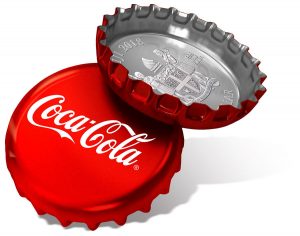
-
2018 Fiji Coca-Cola Bottle Cap-shaped coin (rendering)
-

-
Packaging for the 2018 Fiji Coca-Cola Bottle Cap-shaped coin (rendering)
After looking at the specifications, the coin is 32.6 mm (1.283 inches) in diameter and I thought that the coins were going to be very thin.
Comparing the specification of this coin to pre-1965 United States coins that were made of .900 silver, the Washington quarter was made of 6.25 grams of silver and copper but was 24.3 mm (.957 inches) in diameter. The quarter is .25 grams heavier but 8.3 mm smaller. My caliper measured a 1960 uncirculated Washington quarter with a thickness of 1.75 mm.
Something closer is the size of the Kennedy half-dollar with a diameter of 30.6 mm (1.204) or 2 mm smaller than the Coco-Cola bottle cap coin. But the Kennedy half-dollar weighs 12.5 grams, more than double the Fijian coin.
To satisfy my curiosity, the caliper said that the uncirculated 1964 Kennedy half-dollar in my collection was 2.15 mm thick.
Not counting for the flare of the edges to resemble a bottle cap, the coin is probably 1 mm thick, less than the 1.35 mm of a 1955 Roosevelt dime I measured.
The coin is available for pre-order only from one company on eBay for $29.95 with free shipping. Expected shipping is on December 8, 2017.
The last time I checked, the listing reported that 1,481 of these coins were sold.
For the record, 6 grams of silver weighs .1929 troy ounces. With the price of silver currently at $17.31 per troy ounce, the coin contains $3.34 worth of silver.
If someone buys one of these coins, feel free to write a review. I will publish it here on the blog!
And now the news…

November 13, 2017
BRENTWOOD — When milestones are reached in the armed forces, servicemen and women often receive a challenge coin, creating solidarity with others who share the same accomplishment.  → Read more at fosters.com
→ Read more at fosters.com

November 14, 2017
A hoard of 21 Islamic gold dinars, 2,200 silver coins, and gold artifacts dating to the 12th century CE has been unearthed by archaeologists digging at the Abbey of Cluny, a former Benedictine monastery in Cluny, Saône-et-Loire, France.  → Read more at sci-news.com
→ Read more at sci-news.com

November 14, 2017
IF you've got one of these most sought-after 50p coins then you could be sitting on a tidy profit. The Sir Isaac Newton 50p coin was introduced into circulation in September and Brits are slowly starting to find it in their spare change.  → Read more at thesun.co.uk
→ Read more at thesun.co.uk

November 15, 2017
An "exceptional and rare" medieval treasure trove including more than 2,200 gold and silver coins has been found in France in what has been called a "remarkable" discovery by archaeologists. It's the kind of discovery archaeologists dream of.  → Read more at thelocal.fr
→ Read more at thelocal.fr

November 15, 2017
It was just a strange old penny, a copper-nickel Indian Head minted in 1859, when the government was trying out different metals for one-cent pieces. A grandfather gave it to Eric Pfeiffer Newman in 1918, when he was 7, a little bonus for his nickel-a-week allowance.  → Read more at nytimes.com
→ Read more at nytimes.com

November 16, 2017
A metal detectorist has tracked down a rare gold coin from Richard III's reign near to the site of the Battle of Bosworth. The Half Angel is one of just a handful of such coins that have survived from the king's two-year reign.  → Read more at leicestermercury.co.uk
→ Read more at leicestermercury.co.uk

November 17, 2017
Archaeologists with the National Center for Scientific Research and other institutions in France revealed today that they have unearthed 2,200 silver deniers and oboles, 21 Islamic gold dinars, a very expensive gold signet ring and other objects made of gold from the Abbey of Cluny, located in the department of Saône-et-Loire.  → Read more at mining.com
→ Read more at mining.com
Images courtesy of Modern Coin Mart on
eBay.
Oct 31, 2017 | Canada, coins, nclt, silver
 The Royal Canadian Mint has created two unique coins they call “Nocturnal by Nature” that would fit the theme of Halloween.
The Royal Canadian Mint has created two unique coins they call “Nocturnal by Nature” that would fit the theme of Halloween.
What makes them interesting is that the fields and some of the devices are plated with black rhodium to create a darkened look.
The first coin’s reverse, which is sold out, features a barn owl (Tyto alba) descending upon its prey. The view is looking up as the owl descends toward the night sky.
The second coin’s reverse has an image of a brown bat, darkened by night with its silhouette as it crosses passed the moon overhead.
-

-
2017 Royal Canadian Mint Silver Nocturnal by Nature: The Barn Owl
-

-
Obverse of the 2017 Nocturnal by Nature coins by the Royal Canadian Mint
-
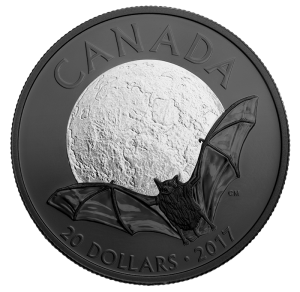
-
2017 Royal Canadian Mint Silver Nocturnal by Nature: The Little Brown Bat
As with all Canadian coins, the obverse features the official Royal Canadian Mint portrait of HM Queen Elizabeth II. The fields and legends are also plated with black rhodium that will make the Queen’s portrait really stand out.
Each coin is one troy ounce of .9999 silver, has serrated (reeded) edges, is 38 mm in diameter, and weighs 31.39 grams. Both coins have a face value of 20 dollars. The Royal Canadian Mint classifies the finish as matte proof.
Mintage is limited to 7,000 for each coin.
The single barn owl coin appears to be sold out on the Royal Canadian Mint website but looks like it can be purchased as part of their subscription program.
The price is listed at $119.95 CAD ($93.55 USD as I type this) for each coin with free shipping to Canada and the United States.
It may be too late for Halloween but they look very interesting!
All images courtesy of the Royal Canadian Mint.
Apr 25, 2017 | coins, commentary, nclt
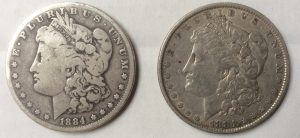
1884 & 1881 Morgan Dollars that were estate finds
The 1884 dollar was in good (G-4) condition with a rim ding while the 1881 coin could pass for an extra fine (XF). When the person behind the cases said that she would sell the coins for $20 each, I added them to growing list of items I was buying. JJ was jealous.
JJ considers himself a hoarder and collector. He likes to find Morgan dollars and hoards them. During our conversation, he said that he hoards all pre-1965 coins regardless of type and condition. As a result, we ended up discussing collecting “modern” versus “classic” coins.
JJ and I are about the same age. We grew up with clad coinage but continued to find silver coins in pocket change until the early 1970s. We filled blue folders from the pocket change we were able to find in our father’s pockets and we have our respective first folders of Lincoln cents. Even though the modern era has been going on for 53 years, there are a lot of people like JJ who gives these coins little to no respect.
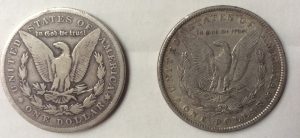
Reverse of the 1884 & 1881 Morgan Dollars estate finds
During the first few years of the blog, I had provided extensive coverage and review of the State Quarters series. At the time, it was a novel idea that involved everyone as the states held competitions to decide how they will be represented forever. Some designs were really special and showed off the historical importance of their state. Others had great designs. Then there were those that were so ugly one could be excused if they were removed from their collections. The problem is that the state quarters were not rare (Philadelphia produced over 1 billion Virginia quarters in 1999) and the hucksters inflated their future value, especially on the television shopping networks turning people off to the hobby.
I have not said much about the America the Beautiful Quarter series. There seems to be a lack of interest in a lot of places. Collectors have shown a fatigue in yet another series and the public has not been involved with the designs as they were with the state quarters. In fact, the U.S. Mint, National Park Service and U.S. Forestry Service worked together to make the decision as to what National Parks or National Forests to feature without involving the public.
Of course, when you do not involve the public you get the infighting between the Citizens Coinage Advisory Committee and U.S. Commission of Fine Arts regarding the design. We see the dance between the two as just annoying while the public sees more government bureaucracy causing problems.
It is possible that the dealers have been talking down modern United States coinage because of their business concerns. However, there are companies that are now making a good living fulfilling the needs of collectors putting together sets and selling non-circulating legal tender (NCLT) coins. While I think some of the coins are gimmicks, these companies are doing well selling the colored and other coins from the Royal Canadian Mint, Royal Australian Mint, and the countries that have had the New Zealand Mint produce their coins.
Just because I do not like those coins does not diminish their value as numismatic collectibles. Even though I will not collect many of these coins, there is nothing wrong with those who do. Maybe if the hobby stops disparaging modern and these alternative types of NCLT coinage it will inspire more collectors to use them as a gateway into the hobby. It would not hurt to try!
NOTE: I previewed this topic as part of the Numismatic World Newsletter that is sent to subscribers Sunday evening. The newsletter includes news about coins, currency, and precious metals from the regular media around the world and not the numismatic press. When I am not previewing what is on my mind, I write exclusive content newsletter readers. To receive the newsletter,
subscribe here.
Dec 21, 2015 | Canada, coins, nclt, silver

2015 Canada Bugs Bunny $20 Silver Coin
Even though both coins were ordered at the same time, they were shipped separately. Packaged in plain envelopes with a nondescript United States address, the Bugs Bunny coin arrived four weeks later and the Superman coin arrived 10 days later. It appears like the Royal Canadian Mint is either mailing them from the United States or using a fulfillment center to do the mailing. In either case, shipping was free!
Coins are placed in a plastic capsule, which I hope is archival safe, with that capsule placed in a clear plastic envelope. The envelop is “sealed” with a sticker and then glued to the card. The card has the information about the coin in both English and French. All of the extra paperwork was added to the Superman coin, but that was inconsequential to the presentation.
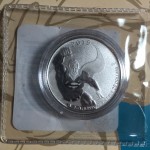
2015 Canada Superman $20 Silver Coin
Before you go unleash yourself on the costs, remember that the $10.74 “markup” also includes manufacturing and packaging costs, shipping, and license fees the Royal Canadian Mint has to pay to Warner Brothers.
Growing up watching Bugs Bunny on television on the weekends and the reruns of the The Adventures of Superman after school starring George Reeves makes these a special collectible.
These are also struck coins without color enhancements. Although the texture is similar to that of the U.S. Mint’s enhanced uncirculated coins, as sculptured works of art, they are very accurate images and beautifully made.
It may be too late to buy these for a holiday present, unless you put an “I.O.U.” in the box. Maybe if you are near the Royal Canadian Mint facility in Ottawa you can check out their physical storefront. You may want to call ahead before making the trip expecting to find these coins.
Packaging Images
-

-
Front Cover
-

-
Inside Cover
-

-
Coin attached inside
-

-
Back Cover
2015 Canada Bugs Bunny $20 Silver Coin Packaging
-

-
Cover with the 2015 $20 Canada Superman coin
-

-
Inside Cover
-
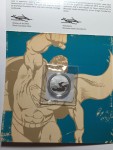
-
Coin attached inside
-

-
Back Cover
2015 Canada Superman $20 Silver Coin Packaging
Oct 27, 2015 | Britain, bullion, coins, nclt, video

Royal Mint Striking Standards
As part of the article and video they discuss the differences between the three types of uncirculated commemorative coin finish: Proof, Brilliant Uncirculated, and Bullion. For the Royal Mint, proof are the highest standards followed by brilliant uncirculated then bullion.
While this may be intuitive to experienced collectors, novice and new collectors may be confused by the difference. The Royal Mint does a very good job at explaining the difference in a short, well produced video. It should be interesting to the beginning and expert collector to see how another mint does their work.
Image and video courtesy of the Royal Mint.
May 14, 2015 | Canada, coins, commemorative, gold, nclt, silver
Eh… What’s up, doc?
Hey bub… did ya hear dat de Royal Canadian Mint is going Looney Tunes?

$250 Looney Tunes Silver Kilo Reverse
I will admit to having grown up watching Bugs, Daffy, Porky, Tweety, and all of their friends on the weekend morning cartoons. I spent many mornings in my bedroom before my parents woke up watching on an old black and white television wondering if Wile E. Coyote would ever catch the Road Runner? Would Sylvester ever learn that he should not eat Tweety Bird? Or will Pépé Le Pew ever figure out why he could never find a girl to go with him to the casbah? Of course, at that age, I didn’t know what the casbah was!
I guess I also have to admit that I am intrigued by some of these coins. Not the ones that seem to be enameled for the design because I have this thing about using paint for the design of the coin. But there are some coins that are going to be really engraved coins that are somewhat affordable. Apparently, if I examine my own preferences, I do not mind enhanced color that enhances the designs but not just splashing paint on the metal disks.

$100 Looney Tunes 14-karat Reverse
For those not familiar with the Royal Canadian Mint’s “20 for $20” program, they provide a limited mintage silver coin with a $20 face value for $20 (note that all prices are in Canadian dollars). These coins are 7.96 grams of .9999 silver and available for direct purchase to buyers in Canada and the United States.
As I type this $20 Canadian is worth $16.49 USD. A U.S. resident buying directly from the Royal Canadian Mint will have their credit card charged in Canadian dollars. Your credit card company will pay the Royal Canadian Mint at the rate at the time of the transaction plus an exchange fee. Exchange fees differ between credit card issuers.
Other options include:

Bugs Bunny $20 Silver coin reverse, part of the Royal Canadian Mint 20 for $20 program
- A $20 “Merrie Melodies” silver coin featuring Bugs Bunny and the gang in a design that is reminiscent of the Looney Tunes’ end credits. The coin is cleverly packaged in a box that mimics the ACME crate.
- A $20 silver four-coin set featuring Bugs Bunny, Daffy Duck and Tweety. If you buy the set as a subscription it will include a free Looney Tunes wrist watch.
- A 14-karat gold Bugs Bunny and Friends coin featuring Bugs Bunny, the Tasmanian Devil, Wile E. Coyote, Daffy Duck and Marvin the Martian. The Royal Canadian Mint claims that there is a “hidden surprise design element” in this coin. If you buy this coin you will also receive an “exclusive” pocket watch.
- Finally, the Royal Canadian Mint will issue one kilo gold and silver coins. The gold coin will have a face value of $2,500 and the silver will have a face value of $250. The design will feature every major Looney Tunes characters. The design of both coins features selective colored enamel applied by hand to Bugs Bunny who serves as the central focal point. He is surrounded by the entire cast of Looney Tunes characters.
As this posting was saved as a draft for the last few days, I have been contemplating what I wanted to do. With my new found nostalgia and admitted mid-life crisis, I look back at the Looney Tunes fondly. Where I grew up, Bugs Bunny sounded like he could have been one of my neighbors! Mel Blanc, who gave Bugs his voice, wasn’t even from New York yet nailed the accent, cadence, and attitude perfectly. I will probably order the Bugs Bunny “20 for $20” silver coin and take some time before I decide on others. if I do decide to do the whole series, I would probably buy the silver $10 coins because they are coins without painted on designs.

All coin images courtesy of the Royal Canadian Mint.
Jun 16, 2014 | coin design, coins, nclt, silver

Anders Celsius
Celsius was a Swedish physicist, mathematician and a professor of astronomy at Uppsala University. As one of Sweden’s premier scientists of his day, Celsius traveled extensively to research ways to measure degrees from the poles in order to improve mapping and navigation. He believed that by studying the stars we could learn more about the composition of the earth and its origins, something we are still doing today.
The research he is most known for was as the first scientist to experiment with temperature in order to define a definitive scale to be used by all scientists as the basis for their experiments. In 1742, Celsius published the paper Observations of two persistent degrees on a thermometer where he defined 100 as the freezing point of water and 0 as its boiling point with a scale of units in between. He called his scale “centigrade” derived from the Latin for “hundred steps.”
Independently, physicist Jean-Pierre Christin of France developed a similar scale with 0 as the freezing point of water and 100 as its boiling point. In 1743, Christin commissioned the building of the “Thermometer of Lyon,” a mercury thermometer based on his research.
Celsius died in 1744 at the age of 42 from tuberculosis. A year after his death, colleague Carolus Linneaus, a botanist interested in the effects of temperature on growing plants, reversed Celsius’ scale and improved on the design for the thermometer. In a paper published in 1745, Linneaus first used the Celsius to describe the temperature scale. He later convinced the Royal Swedish Academy of Sciences to change the name of the scale to Celsius in memory of his late colleague.
To honor Celsius, the Cook Islands hired Coin Invest Trust of Balzers, Liechtenstein to design and strike a coin to honor Andres Celsius. The coin with a 5 Dollar face value will 50mm in diameter and proof struck using one troy ounce of .925 silver. Mintage will be limited to 1744 pieces.
The coin’s unique reverse design will include a thermometer that will be integrated around the center of the coin that will feature the portrait of Anders Celsius. Based on the images, the thermometer looks like it will be based on the same technology as those used in temperature strips. The area where the portrait will be features a little degree mark before the C in Celsius, the date 1744-2014, and a small depiction of a thermometer.
Since Cook Islands are under the sovereignty of New Zealand and New Zealand is a member of the Commonwealth Realm, Queen Elizabeth II is the legal head of state and appears on the obverse of the coin. The portrait is by British sculptor Ian Rank-Broadley whose work appears on all coins of the Commonwealth Realm.
-
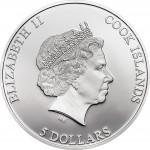
-
Obverse of the 2014 Cook Island Anders Celsius NCLT features the Ian Rank-Broadley image of Queen Elizabeth II.
-

-
Reverse of the 2014 Cook Island Anders Celsius NCLT features a portrait of Celsius surrounded by a working thermometer.
No announcement has been made as to when it will be available and the purchase price.
Given my resistance to gimmicks on coins (with my own admitted hypocrisy), there is still something compelling about the proposed design for this non-circulating legal tender (NCLT) coin. I will wait to see how much the coin will cost before making a commitment one way or the other.
-

-
An image of how the 2014 Cook Island Anders Celsius NCLT coin presentation case.
-
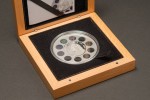
-
An image of how the 2014 Cook Island Anders Celsius NCLT coin will look in its presentation case.
-

-
An image of how the 2014 Cook Island Anders Celsius NCLT coin will look in its holder.
Image of Anders Celsius from Wikimedia Commons
Coin images courtesy of Coin Invest Trust







 → Read more at
→ Read more at 




























